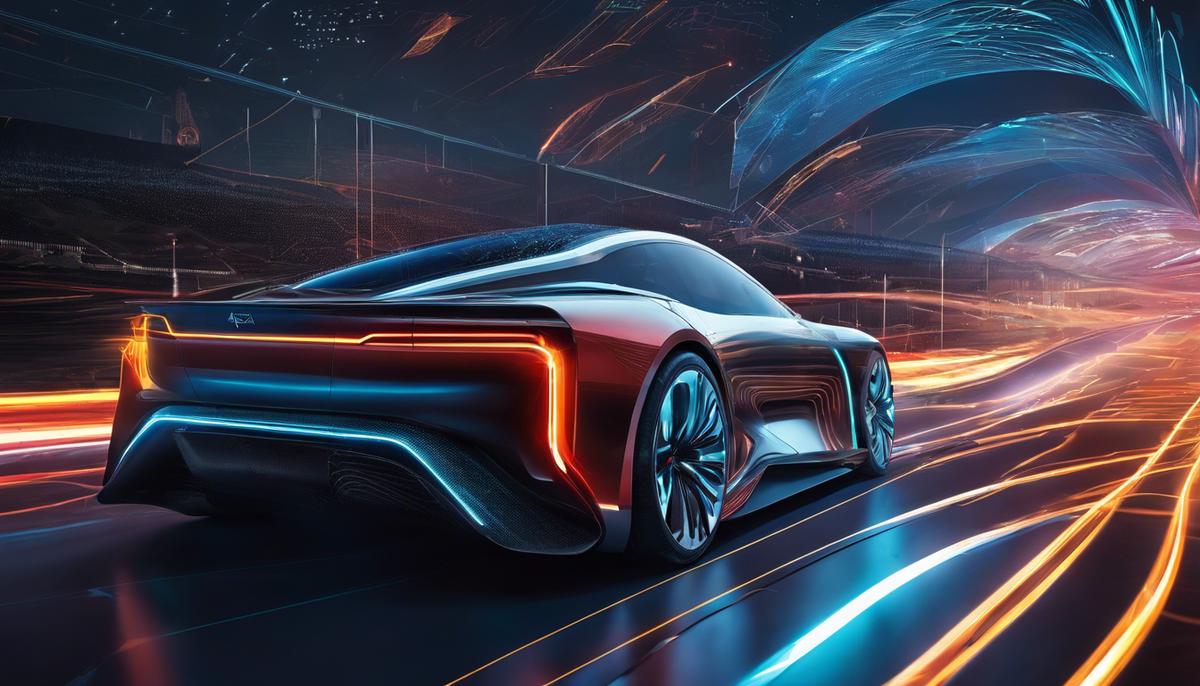Autonomous vehicles bring forth new opportunities and challenges in the realm of cybersecurity. These intelligent vehicles, in their design and operation, are highly reliant on technology and interconnected networks, paving the way for potential threats and vulnerabilities. The risks range from data breaches to malicious hacks, and as these vehicles become more prevalent, understanding these cybersecurity threats becomes crucial. Moreover, implementing robust technological measures, adhering to the evolving regulatory framework, and staying abreast of future considerations and emerging technologies form the pillars of effective cybersecurity in autonomous vehicles. As we navigate through this discussion, we will delve into each of these aspects, providing a comprehensive exploration of cybersecurity in autonomous vehicles.
Understanding Cybersecurity Threats in Autonomous Vehicles
Cybersecurity Threats to Autonomous Vehicles: A Dire Road Ahead
Autonomous vehicles, with their ability to redefine urban mobility and improve transportation safety, are quickly racing towards mainstream adoption. Behind the thrill of embracing this transformative technology, however, lurks a series of potential cybersecurity vulnerabilities that could pose substantial threats to the safety of passengers and pedestrians. Understanding these threats is not an elective but an obligation for technology enthusiasts, early adopters, and experts alike.
One of the foremost vulnerabilities is the potential hacking of the vehicle’s navigation and control systems. Imagine a remote attacker seizing control of an autonomous vehicle and directing it to an unintended destination. The possibilities are petrifying, revealing a need for stronger, integrated cybersecurity frameworks that can shield these vehicles from such malicious intrusions.
Another critical threat is the possible sabotage of vehicle-to-vehicle (V2V) and vehicle-to-infrastructure (V2I) communication systems. Autonomous vehicles rely heavily on these systems for accurate navigation and obstacle detection. A malicious actor could inject false information or disrupt these transmission signals, causing unimaginable chaos on the roads.
Data privacy is another domain under threat. Miscoded or deliberately faulty software could expose a wealth of sensitive data, including those related to the owner, the vehicle’s specifications, and its usage patterns. A democracy, as we know, thrives on the principle of informed consent. Privacy invasions of this sort not only challenge the trust instilled in autonomous driving but also strike deep at the heart of this principle.
Moreover, the widespread use of machine learning algorithms for training autonomous vehicles opens new avenues of risk. Adversaries could compromise the integrity of these algorithms by contaminating training data or through poisoning attacks, leading to flawed driving decisions by autonomous vehicles.
Though these potential threats present substantial challenges, they also provide an impetus to innovate resilient, robust cybersecurity defenses. The focus needs to be on incorporating security by design, honing real-time threat detection capabilities, and fostering international collaboration to frame comprehensive standards.
As much as we’re eager to ride the autonomous wave, it’s crucial to comprehend that this technological marvel is not without its share of risks. Let’s actively participate in making this automated revolution a secure environment for all. Because, after all, technology is a tool we wield, not one that should be allowed to recklessly steer us into danger.

Technological Measures for Cybersecurity in Autonomous Vehicles
Mitigating Cybersecurity Threats in Autonomous Vehicles: Advanced Action in Progress
As autonomous vehicles cruise further into the mainstream, there’s a pressing need to beef up cybersecurity measures protecting them from malicious activities. Several initiatives and cutting-edge technologies have been developed and implemented to ensure these self-driving cars remain impervious to cyber threats.
One of the foremost countermeasures is encryption. High-level encryption technologies, such as AES-256 Encryption, are being leveraged to safeguard communications between the autonomous vehicle and its control center, as well as the data transmitted for vehicle-to-vehicle and vehicle-to-infrastructure communication. This robust encryption serves as a mighty fortress against potential cyber hackers, safeguarding sensitive operations and data integrity from unauthorized intrusion.
Furthermore, to reduce the risk faced by machine learning algorithms used in autonomous vehicles, many manufacturers are working on the implementation of advanced secure boot techniques. These techniques validate the digital signatures of firmware updates, ensuring that the algorithms are only updated with software that is verified and trusted.
An industry-wide approach to battling this cybersecurity menace is the creation of unified cybersecurity standards. These standards will not only streamline protection tactics but also help manufacturers enhance the security and resilience of autonomous vehicle systems. Notable in this regard are efforts by international bodies such as the ISO and SAE to develop comprehensive cybersecurity standards.
Additionally, the deployment of sophisticated intrusion detection and prevention systems (IDPS) are also shows promising results. These real-time security solutions monitor the network and system activities for malicious exploits or policy violations. By using IDPS, any detected threat can be reported and subsequently blocked or prevented, ensuring the smooth operation of autonomous vehicles unaffected by potential cybersecurity threats.
In a world that’s increasingly becoming connected, securing vehicle cloud data has also gained prominence. Companies are employing cutting-edge solutions like cloud access security brokers (CASBs) to provide security for cloud-based storage systems that autonomous vehicles use. This ensures that sensitive data remains largely inaccessible to unauthorized third parties.
Lastly, advanced threat intelligence solutions are providing another layer of cybersecurity. These solutions gather and analyze information about potential threats to forestall them. With their predictive capabilities, these solutions help individual companies and the industry at large to stay a step ahead, preparing and protecting against potential threats before they materialize.
Innovation and change are the hallmarks of any technological advancement. The autonomous vehicle industry is no exception to this rule. While cybersecurity threats are, and will continue to be, a pressing concern, the measure to which technology responds to these challenges continues to be impressive. The above-discussed measures reinforce the fact that although the terrain of autonomous vehicles may be ripe with cybersecurity threats, the industry’s mitigation strategies are perpetually evolving, stepping up the game to outsmart potential cyber adversaries regularly.

Legal and Regulatory Framework for Cybersecurity in Autonomous Vehicles
Delving into the legal and regulatory panorama of cybersecurity for autonomous vehicles, it’s evident that the current landscape is fractured and evolving. Multi-jurisdictional legislation, regulatory disparity, and the dynamic nature of technology present unique challenges that need technologically adept legislation to ensure consumer privacy and safety.
At the heart of the U.S. regulatory framework are guidelines issued by the National Highway Traffic Safety Administration (NHTSA). Emphasizing transparency, engagement, adaptability, and safety, these voluntary measures guide automakers in navigating this new territory. NIST’s Cybersecurity Framework also plays an instrumental role, providing guidelines for managing cybersecurity-related risks while developing autonomous vehicle technologies.
Further regulations are mandated by the Federal Trade Commission (FTC), which volunteers guidelines to protect consumer data privacy. FTC enforces the principles of transparency and consent concerning the collection and usage of consumer data. However, it should be noted that these guidelines are primarily consumer-oriented and fall short in addressing the unique challenges posed by autonomous vehicles.
Speaking of individual state laws, there’s a noticeable lack of uniformity. While some states like Michigan and California have enacted specific legislation governing autonomous vehicles, many others have yet to catch up, leading to a patchwork of laws that make nationwide compliance complicated.
On a global level, the United Nations Economic Commission for Europe (UNECE), has formulated regulations concerning software updates and cybersecurity for autonomous vehicles, setting a promising precedent for international cooperation in this new era.
However, despite all these efforts, current regulations and laws fall short of directly addressing the cybersecurity challenges specific to autonomous vehicles. What we have are extensions of general cybersecurity regulations that do not delve into the complexities of autonomous vehicle technology.
To tackle this, stronger laws need to be developed around firmware over the air (FOTA) updates, vulnerability disclosure platforms, and end-of-life provisions for autonomous vehicles. Legislation must also confront the legal, ethical, and cybersecurity implications involving the use of artificial intelligence in autonomous driving.
Legislation aside, automakers have a pivotal role to play in this landscape. Beyond compliance with existing regulations, they need to proactively mitigate cybersecurity risks by working in tandem with cybersecurity professionals, technologists, and lawmakers to create a secure ecosystem for autonomous vehicles.
In conclusion, the current legal and regulatory framework governing cybersecurity in autonomous vehicles is a complex, evolving landscape. As technology continues to advance at a lightning-fast pace, regulation and legislation need to keep up to match strides with cybersecurity concerns. Such dynamic interaction of tech and law will not only protect autonomous vehicles from cyber threats but also pave the way for secure smart mobility solutions.

Future Considerations and Emerging Technologies in Cybersecurity for Autonomous Vehicles
Building further on the considerable coverage of key cybersecurity considerations for autonomous vehicles, let’s delve deeper into the innovative defenses and strategies being explored and developed to curtail these risks. Beyond the vulnerabilities of systems to hacking, data privacy, federal regulations, and the need for comprehensive standards – among other topics already discussed – it’s essential to spotlight the importance of Secure Sockets Layer/Transport Layer Security (SSL/TLS) protocols, integrated hardware security, the rise of Blockchain in increasing cybersecurity, and cryptography-based solutions.
The SSL/TLS protocols are a veritable stronghold for secure data transfer between servers and applications. By implementing these protocols, the possibility of intercepting and manipulating data can be tremendously reduced. Autonomous vehicle systems that allow the car to communicate with external networks and devices need to adopt SSL/TLS protocols to enhance security and ensure data integrity.
Embedding hardware security modules (HSMs) within automotive Controller Area Network (CAN) buses remains another crucial aspect of future-proofing cybersecurity. HSM is a physical computing device safeguarding and managing digital keys for strong authentication. An effective defense against breaches, it prohibits unauthorized access or tampering with vehicle software.
The promising future of Blockchain technology in uplifting the security of autonomous vehicles cannot be overstated. Evidence points to the increasing relevance of decentralized data storage for vehicular data to minimize the risk of cyberattacks. Blockchain, providing a distributed ledger system, ensures data cannot be altered or deleted by malicious parties. Apart from data security, Blockchain can also offer vehicle-to-vehicle communication and secure software updates, reinforcing the ecosystem’s overall safety.
Lastly, the incorporation of cryptographic solutions can expedite requirements for authentication and encryption. Public Key Infrastructure (PKI) is one such solution being actively explored. In autonomous and connected cars, PKI addresses security concerns by ensuring secure V2X communications via digital certificates, preventing data alteration or theft.
The future of cybersecurity for autonomous vehicles indeed seems to lie in these emerging technologies and robust architectural designs embraced and implemented on a worldwide scale. A combination of cutting-edge tech with stringent regulations could pave the way for a safer and smarter transportation system. Embracing these counter-measures could ultimately lead us to the coveted goal of truly secure autonomous and connected vehicles.
Clearly, the rapidly evolving landscape of autonomous vehicles demands advanced and proactive cybersecurity measures. Technologies like AI and machine learning are increasingly contributing to the robustness of these security measures, foreseeing and preventing possible threats. Effective cybersecurity goes beyond tackling current challenges but involves anticipating and preparing for future ones. Meanwhile, proper enforcement and adherence to the ever-changing regulatory framework ensure data privacy and protection. As we continue to take strides in autonomous vehicle technology, our focus should remain steadfastly on enhancing cybersecurity, safeguarding not only our data but also our lives, and the sustainability of intelligent transportation.
